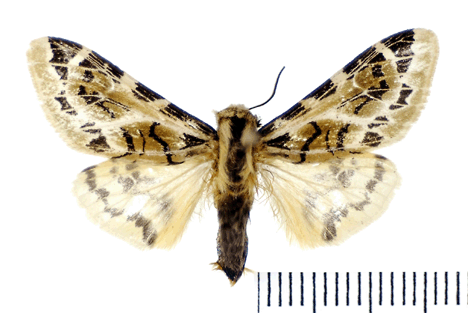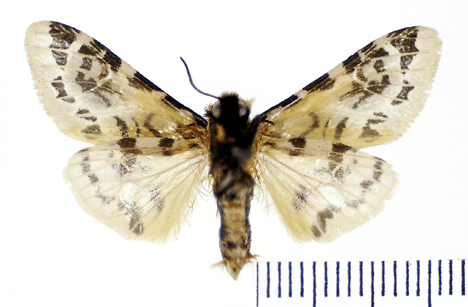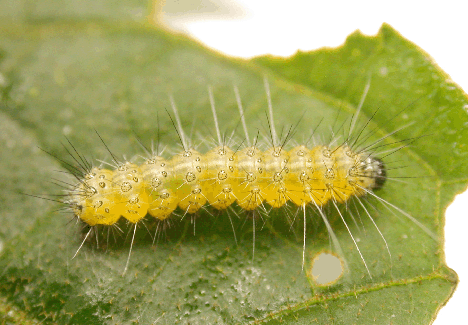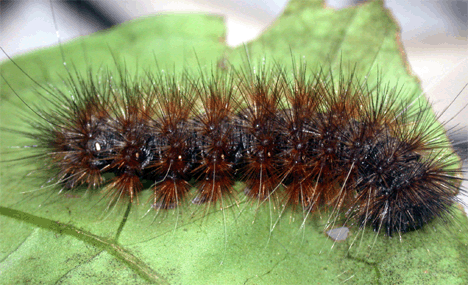LIFE HISTORY
DATA
|
Caterpillar
common name:
|
-
- "Negro espin"
- "Puerco espin
café"
- "Arctiid café
tres linias blancas brochas amarillas"
|
Caterpillar
behavior & description:
|
-
- The larvae of this
species are solitary feeders
|
Rearing results
and development time:
|
-
-
|
|
Host
plants:
|
- Barnadesia parviflora
(Asteracea)
- Adenostemma harlingii
(Asteraceae)
- Browallia speciosa
(Solanaceae)
- Solanum sp.
(Solanaceae)
|
Parasitoids:
|
|
Predators:
|
|
Collection
sites:
|
-
- Caterpillars were collected
inside primary forests, partially reforested pastures and
next to roads along an altitudinal transect from 400m
(Tena) to 3500m (Papallacta) in the vicinity of the
Yanayacu Biological Station and Center for Creative
Studies (YBS: S 00° 35.9' W 77° 53.4': 2100 m),
5km west of Cosanga, Napo province of eastern Ecuador.
|
Voucher locations
& numbers:
|
- @ American Museum of
Natural History : 35202, 35661, 38677, 39487,
39610,
- @ University of Nevada
Reno (UNR): n.a.
|
Adult
identification status:
Dissections:
|
-
- Compared with male
Lectotype No.11122 U.S.N.M. Turuptiana obscura Schaus
type. Lectotype male Turuptiana obscura Schaus by A.
Watson, 1967. Genitalia slide AW490.
-
- Specimens dissected by
S. Rab Green:
- Reared male # 35661 located
@ , genitalia slide SRG #190
- Collected (YY) male located
@ , genitalia slide SRG #143
|
Original description
of adult:
|
- Schaus, W. 1901.
Descriptions of some new species of Heterocera. Annals
and Magazine of Natural History 7(7):
268.
|
Type
locality:
|
- Peru: Described from
an unspecified number of specimens from Peru. Five
examples in the USNM collection from Peru may represent
paralectotypes. No details about exact
location.
|
Known distribution
range:
|
|
|
|
|




